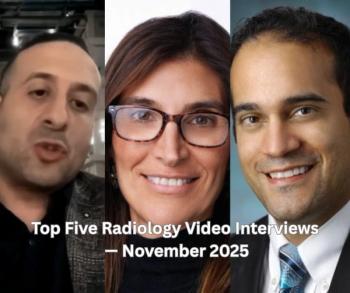
Radiology Report Best Practices
How to ensure a meaningful radiology report, from RSNA 2016.
“The radiology report is the clinician’s primary gage of our value and sometimes it is the patient’s only interaction with us,” Curtis Langlotz, MD, PhD, medical informatic director for Radiology at Stanford Healthcare, said during a standing-room-only session at RSNA 2016. “In the end, it is what we are paid for,” he said.
Providing a brief, clinically relevant, and consistent report is the goal. Developing best practices around precise and accurate reporting include establishing a routine, using short, declarative sentences, and providing summaries within the report that can stand alone.
A
The summary should also eliminate lengthy explanations and information that is not relevant or supported by clinical information. “There is a cost to extraneous information,” said Langlotz, who believes report readers are in a hurry and need the most efficient information.
Word or phrase usage is highly important and certain phrases don’t always give a strength and direction to findings, such as saying “findings are consistent with a specific disease”. Likewise, the use of post-test probabilities is not wise if there is not a comparable pre-test probability to relate it to.
Inversely, when a radiologist is certain of a finding, “normal is a powerful word,” said Langlotz. “It means that all abnormalities have been considered and excluded, it’s a definitive answer, and it’s good for the patient,” he said. It offers no additional medical or legal risk and is much more effective than the use of the words “unremarkable, within normal limits, or essentially normal.”
Using the word “normal” also helps to answer the key question a clinician is asking, “how is this exam different than normal and should I care?” he said and ultimately saves them time.
Additional tips to creating a high-quality report included:
Size and Measurement. Anatomy such as the aorta for which there is clear literature to indicate risk is one example of an important measurement. In cases in which there is not a clear reason or methodology to measure quantitatively, there should be a consistent expression of size such as “trace, small, moderate, large, extremely large,” Langlotz said, noting to stay away from words like “tiny, prominent, chunky, or inconspicuous.”[[{"type":"media","view_mode":"media_crop","fid":"54442","attributes":{"alt":"Curtis Langlotz, MD, PhD","class":"media-image media-image-right","id":"media_crop_2737946844286","media_crop_h":"0","media_crop_image_style":"-1","media_crop_instance":"6815","media_crop_rotate":"0","media_crop_scale_h":"0","media_crop_scale_w":"0","media_crop_w":"0","media_crop_x":"0","media_crop_y":"0","style":"height: 200px; width: 200px; border-width: 0px; border-style: solid; margin: 1px; float: right;","title":"Curtis Langlotz, MD, PhD","typeof":"foaf:Image"}}]]
Severity. “I personally have trouble distinguishing even five points of severity,” he said, noting “mild, moderate, and severe,” as key points of reference. Linking severity to specific imaging features or to literature that establishes a grading scheme establishes consistency.
Clinical Correlation. Langlotz is not a fan of using this term in a report. He shared that clinical correlation is what a clinician does, like radiologists looking at images. “Think about whether clinical correlation can actually solve the diagnostic dilemma before using it,” he asked, offering the ability to suggest diagnostic options based on clinical correlations instead when relevant.
Observation Detachment Hedge. A style issue to avoid at all costs is the use of phrases such as “is seen,” “identified,” “appears to be present,” or “is known to be made of,” because they imply, “if there was a better radiologist in the room they might see it but I didn’t,” Langlotz said.
Special Issues to Avoid. Phrases including “non-specific, cannot exclude, cannot rule out, and consistent with,” Langlotz said to steer clear of due to their ambiguous nature. “Now that patients increasingly see their own reports electronically,” he said using emotional content within a report, including stating a patient’s disease has “surprisingly” not spread, is unnecessary.
“Not much has changed within the last century with radiology reports,” concluded Langlotz, who said the form is fundamentally the same despite new technology trends. It is important to ask, “As we move from measuring volume and being paid by how many reports we do to being measured by value and quality, what is the role of the radiology report in a post fee-for-service world?” he asked, pondering ways information could be delivered differently versus reporting on each singular study.
Newsletter
Stay at the forefront of radiology with the Diagnostic Imaging newsletter, delivering the latest news, clinical insights, and imaging advancements for today’s radiologists.



























